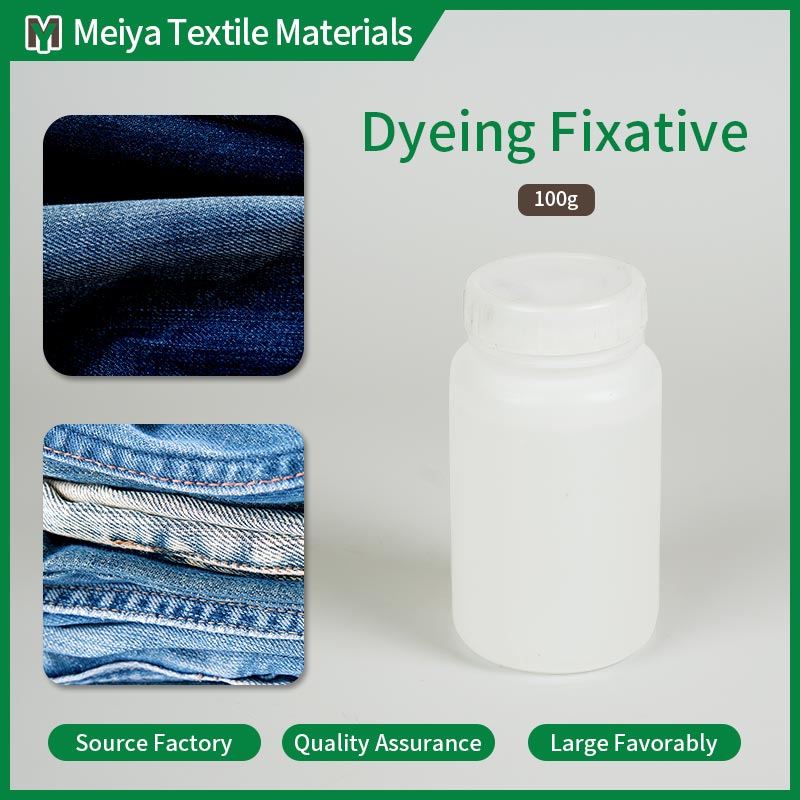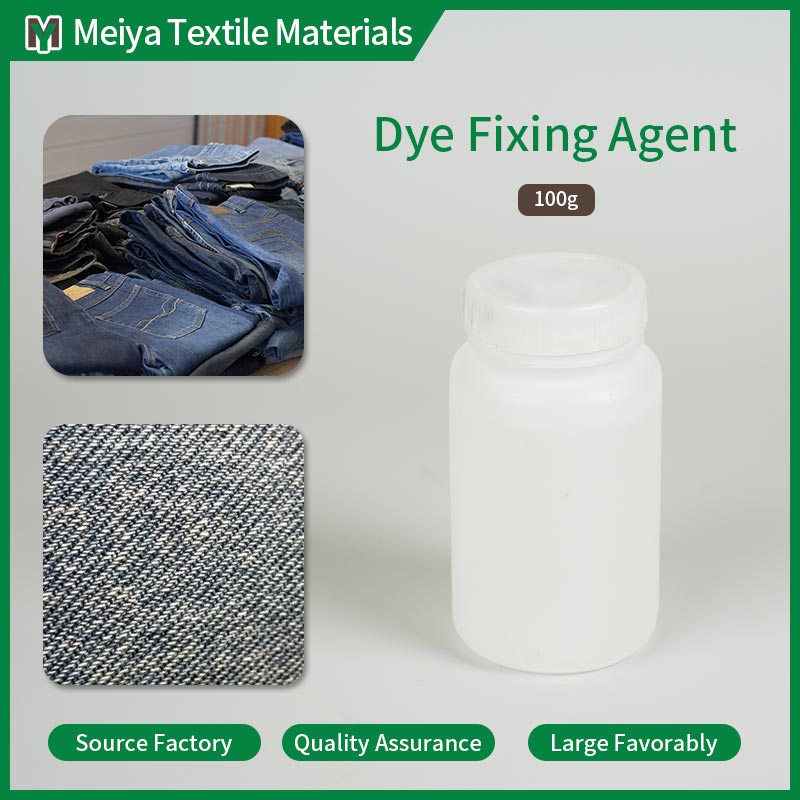Textile Dyeing Auxiliaries
Please click the button below to contact us.
Introduction:Textile Dyeing Auxiliaries play an indispensable role in the dyeing process, can improve the dyeing effect, enhance the dyeing efficiency, enhance the bonding between dyes and fibers, make the color of textiles more vivid, firm and uniform, and help optimize the dyeing process conditions, reduce energy consumption, and have an important impact on the final quality and performance of textiles.
Product Description
Textile Dyeing Auxiliaries are auxiliary chemicals used in the textile dyeing process. They play an indispensable role in the dyeing process, can improve the dyeing effect, enhance the dyeing efficiency, enhance the bonding between dyes and fibers, make the color of textiles more vivid, firm and uniform, and help optimize the dyeing process conditions, reduce energy consumption, and have an important impact on the final quality and performance of textiles. It is an indispensable and important part of the textile printing and dyeing industry.

textile dyeing auxiliaries Features:
High efficiency: Textile dyeing auxiliaries have high-efficiency auxiliary performance. For example, taking leveling agents as an example, in the dyeing process, their dosage usually only accounts for about 1% to 5% of the weight of the dye, but it can significantly improve the uniformity of dyeing, control the color difference within 0.3 to 0.5 levels, greatly reduce the defective rate caused by color difference, and improve production efficiency and product quality.
Good solubility and stability: Most textile dyeing auxiliaries can be quickly dissolved in water at room temperature and pressure, and the dissolution time generally does not exceed 15 minutes. They can maintain stable chemical properties in a wide pH range (usually pH 4 to 10) and different temperature ranges (normal temperature to 100℃), without precipitation, stratification, etc., to ensure the performance in the dyeing process.
Environmental protection: With the continuous improvement of environmental protection requirements, the chemical oxygen demand (COD) of many textile dyeing auxiliaries has been greatly reduced. Taking the new environmentally friendly fixing agent as an example, its COD value can be controlled below 50mg/L, which is about 80% lower than that of traditional auxiliaries, reducing pollution to the environment. At the same time, the wastewater generated in the production process is easier to handle.
Multifunctionality: Some textile dyeing auxiliaries integrate multiple functions. Some new dyeing carrier auxiliaries, in addition to promoting the diffusion of dyes into the fiber and increasing the dyeing rate by 10% to 30%, also have certain softness and antistatic functions, which can make the dyed fabric feel softer and reduce static electricity by 60% to 70%, broadening its application range.
Good compatibility with other chemicals: In actual dyeing processes, textile dyeing auxiliaries often need to be used together with other chemicals such as dyes and other auxiliaries. For example, when common penetrants are mixed with various reactive dyes, direct dyes, etc., they have good compatibility, and no chemical reaction will occur to cause performance degradation. The stability after mixing can be maintained for several hours or even days, ensuring the smooth progress of the dyeing process.
Textile Dyeing Auxiliaries Application:
Improve dye uptake: Textile dyeing auxiliaries can interact with dyes to promote the migration and adsorption of dyes from the dye bath to the inside of the fiber. For example, when dyeing cotton fabrics with reactive dyes, adding an appropriate amount of dyeing auxiliaries such as sodium chloride can increase the dye uptake by about 20% to 30%. This is because dyeing auxiliaries can increase the conductivity of the dye solution, making it easier for dye molecules to overcome the charge repulsion, approach and adsorb to the fiber surface, thereby accelerating the dyeing rate, shortening the dyeing time, and improving production efficiency.
Improve dyeing uniformity: Dyeing auxiliaries help to evenly distribute the dye on the fiber and prevent local aggregation or uneven adsorption of the dye on the fiber surface. It has a certain degree of dispersibility and leveling, which can reduce the adsorption rate of the dye on the fiber surface, so that the dye molecules have enough time to be evenly distributed on the entire fiber surface and gradually diffuse into the inside. For example, when dyeing polyester with disperse dyes, using a suitable dyeing auxiliaries can increase the dyeing uniformity by 30% to 40%, reduce the uneven dyeing phenomena such as color flowers and color blocks, and improve the appearance quality of the fabric.
Improve dyeing fastness: Dyeing auxiliaries can enhance the bonding force between dyes and fibers and improve dyeing fastness. Taking direct dyeing of cotton as an example, after adding dyeing auxiliaries, the hydrogen bonds, van der Waals forces and other forces between dyes and fibers are enhanced, making the dye molecules more firmly fixed on the fibers, thereby improving the fabric's washing fastness, rubbing fastness and other color fastness indicators by 1 to 2 levels, reducing the shedding and fading of dyes during washing, rubbing and other processes, and extending the service life of the fabric.
Optimize dyeing process conditions: Dyeing auxiliaries can improve dyeing process conditions to a certain extent and make the dyeing process smoother. For example, lowering the dyeing temperature, shortening the dyeing time, etc. In some low-temperature dyeing processes, adding dyeing auxiliaries can reduce the dyeing temperature by 10℃ to 20℃ while maintaining a good dyeing effect, which not only saves energy but also reduces production costs.
Broaden the scope of dyeing applications: Dyeing auxiliaries are suitable for dyeing systems of various fibers and dyes, and can broaden the scope of dyeing applications. For some difficult-to-dye or special fibers, such as polyester and acetate fibers, suitable dyeing auxiliaries can make the dyes more easily adsorbed and diffused into the fibers, achieving good dyeing effects. In addition, dyeing auxiliaries can also be used for different types of dyes, such as reactive dyes, disperse dyes, and vat dyes, to meet the dyeing needs of various textiles and improve the color richness and diversity of textiles.
Textile Dyeing Auxiliaries Maintenance:
Storage environment control: The storage environment of textile dyeing auxiliaries is crucial to maintaining their performance. The auxiliaries should be stored in a cool, dry and ventilated warehouse with a temperature between 5℃ and 30℃ and a relative humidity between 40% and 60%. For example, some auxiliaries containing active groups are prone to hydrolysis reactions in high temperature and high humidity environments, resulting in performance degradation. According to statistics, under suitable storage conditions, the effective ingredient preservation rate of auxiliaries can reach more than 95%, while after one year of storage in harsh environments, the effective ingredient loss can reach 20% to 30%.
Sealed storage measures: Ensuring that the packaging of textile dyeing auxiliaries is well sealed is the key to maintenance. Most auxiliaries are packaged in plastic barrels or composite packaging bags. For barreled auxiliaries, it is necessary to regularly check whether the barrel lid is tightened and the sealing ring is intact to prevent moisture and impurities in the air from entering. For composite packaging bags, attention should be paid to the sealing of the seal to avoid moisture and agglomeration of the auxiliaries due to packaging damage. For example, anionic auxiliaries are prone to agglomeration after being damp, and the dissolution rate of the agglomerated auxiliaries will be reduced by 50% to 60%, affecting the use effect.
Classification and storage management: Different types of textile dyeing auxiliaries should be stored in different categories to avoid mutual contamination and chemical reactions. For example, if cationic auxiliaries and anionic auxiliaries are stored together, ionic interactions may occur, resulting in precipitation or complexes, causing the auxiliaries to fail. Separate storage areas should be set up, well marked, and inventory should be counted and sorted regularly to ensure the independence of different types of auxiliaries and their stable performance.
Maintenance during use: When using textile dyeing auxiliaries, attention should also be paid to maintenance. Accurate measurement is the key. The measuring tools should be cleaned in time after each use to avoid residual auxiliaries from agglomerating and affecting the accuracy of the next use. When adding auxiliaries to dyeing equipment, prevent the auxiliaries from directly contacting high-temperature equipment parts to prevent the auxiliaries from decomposing and failing due to high temperature. When adding auxiliaries to a high-temperature and high-pressure dyeing machine, the auxiliaries should be dissolved and diluted first, and then slowly added to the dyeing machine. This will allow the effective ingredient preservation rate of the auxiliaries to reach more than 90%. If solid auxiliaries are added directly, the local high temperature may cause a loss of 10% to 20% of the effective ingredients.
Regular inspection and maintenance: It is essential to conduct a comprehensive inspection and maintenance of the inventory of textile dyeing auxiliaries on a regular basis. Check the physical properties of the auxiliaries, such as appearance, color, and odor, at least once a month, and handle them in a timely manner if there are any abnormalities. At the same time, sample and test the auxiliaries that have been stored for a long time to test whether their main performance indicators meet the standards. For example, to test the leveling effect of the leveling agent, a small amount of auxiliaries can be taken for simulated dyeing experiments to observe the color difference. If the color difference exceeds the standard range, the auxiliaries need to be replaced to ensure the reliable quality of the auxiliaries during the production process.
Textile Dyeing Auxiliaries FAQs:
1. What is a Textile dyeing auxiliaries?
A Chemical accelerator which is used in the textile industry involves a chemical composition that promotes dyeing and finishing of fabrics thereby accelerating the textile processes in a manufacturing unit. This increases the efficiency of dye and treatment application hence increasing production efficiency.
2. How do I implement the use of the Textile dyeing auxiliaries in my processes?
The accelerator is used to directly inject into the dye bath or finishing solutions depending on the directions issued by the manufacturer. Trials however have to be done to establish the right concentration with respect to the processes and applications in question.
3. Is the usage of the Textile dyeing auxiliaries safe?
Yes, our Textile dyeing auxiliaries are safe since they meet international safety standards. This specific chemical is designed to ensure the safety of the workers and when used as per the guidelines also restricts any possible environmental harm.
4. Is there a restriction with the types of dyes this accelerator can work with?
No, our Textile dyeing auxiliaries will work well with almost any dyestuff including reactive, direct and disperse dyes. However, we recommend demonstrating compatibility with the specific dye formulations that you are using.
5. Why should I use the Textile dyeing auxiliaries?
Adopting our Textile dyeing auxiliaries would help you achieve faster production cycles, better quality colors and more efficient textile processes overall. This, in turn, leads to lower costs and higher quality products.





